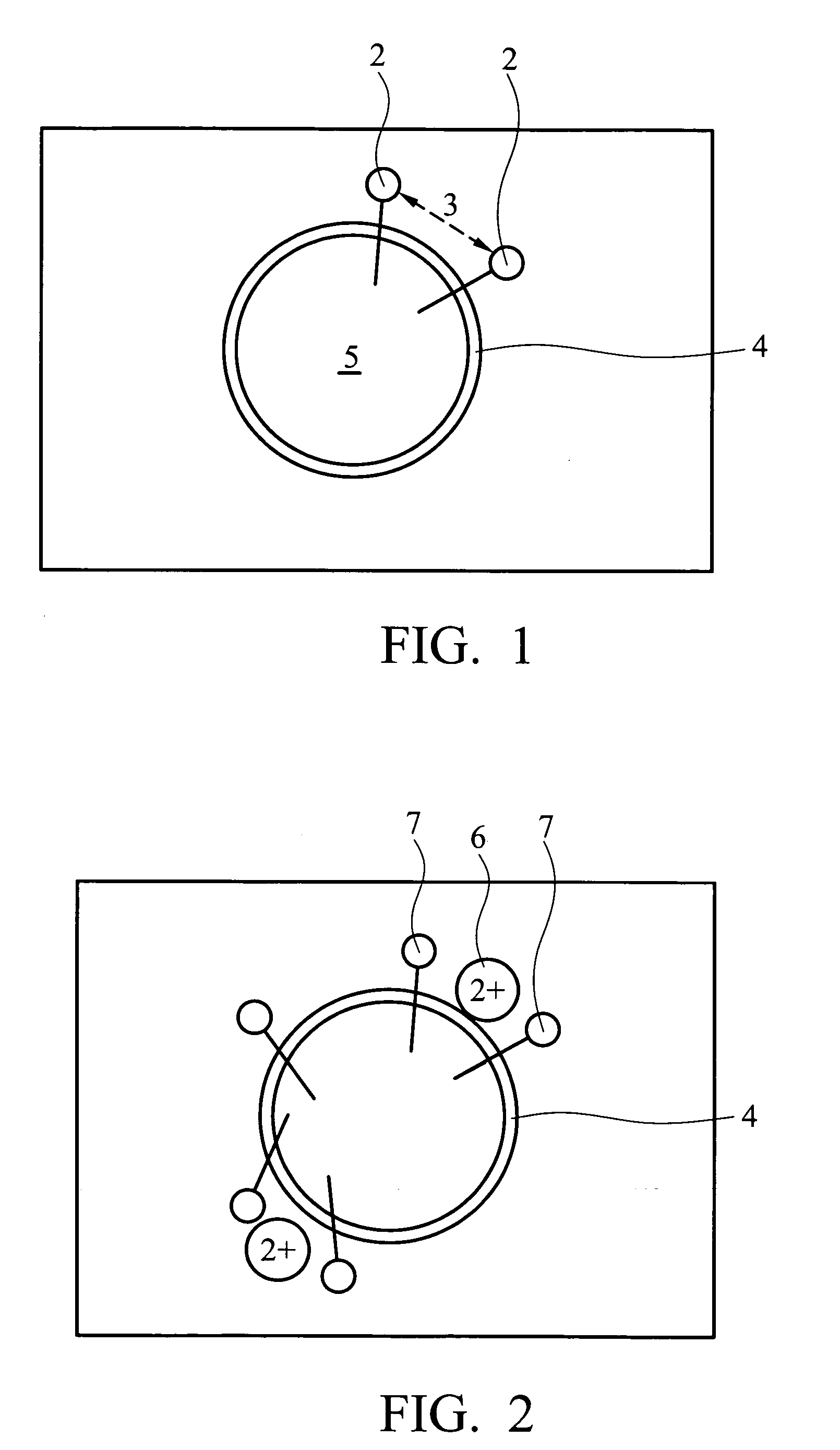Method for preparing polymeric microsphere by aqueous two phase emulsion process
a polymeric microsphere and emulsion technology, applied in the field of preparing polymeric microspheres by aqueous two phase emulsion process, can solve the problems of poor recovery yield, approximately 20-30%, and suffers in the above oil/water emulsion method, so as to increase the recovery yield and the effect of encapsulation efficiency of drugs
- Summary
- Abstract
- Description
- Claims
- Application Information
AI Technical Summary
Benefits of technology
Problems solved by technology
Method used
Image
Examples
example 1
Preparation of Polymeric Microspheres
[0032] 1 g of sodium alginate was completely dissolved to form a 10% sodium alginate aqueous solution. 2 g of chitosan was dissolved to form a 1.5% aqueous solution (pH 4.4). These two aqueous solutions were mixed and homogenized at 9500 rpm for 30 minutes to form an emulsion. 1 g of calcium chloride solution (4.5%, pH 4.4) was added dropwise to the emulsion and stirred for 30 minutes, allowing sodium alginate to crosslink to form polymeric microsphere. The resulting microspheres were filtered off under reduced pressure. The filter cake was dispersed into water for 10 minutes (filter cake:water=1:3(w / w)), and then frozen at −20° C. for 3 hours. After complete freezing, the sample was freeze-dried for 24 hours, that is, frozen at −40° C. for 60 minutes and then dried at 4° C. until completely dry, obtaining dried polymeric microspheres.
example 2
Preparation of Polymeric Microspheres
[0033] 1 g of sodium alginate was completely dissolved to form a 10% sodium alginate aqueous solution. 2 g of dextran was dissolved to form a 10% aqueous solution (pH 1.0). These two aqueous solutions were mixed and homogenized at 9500 rpm for 30 minutes to form an emulsion. 1 g of calcium chloride solution (6%, pH 1.0) was added dropwise to the emulsion and stirred for −30 minutes, allowing sodium alginate to crosslink to form polymeric microspheres. The resultant microspheres were filtered off under reduced pressure. The filter cake was dispersed in water for 10 minutes (filter cake:water=1:3(w / w)), and then frozen at −20° C. for 3 hours. After complete freezing, the sample was freeze-dried for 24 hours, that is, frozen at −40° C. for 60 minutes and then dried at 4° C. until completely dry, obtaining dried polymeric microsphere.
example 3
Preparation of Polymeric Microspheres
[0034] 1 g of Carbopol 934P (CP 934P, manufactured from BF Goodrich) was completely dissolved in 0.5 N NaOH to form a 3% Carbopol aqueous solution (pH 13). 2 g of chitosan was dissolved in water to form a 2% aqueous solution (pH 2.0). These two aqueous solutions were mixed and homogenized at 9500 rpm for 30 minutes to form an emulsion. 1 g of zinc sulfate solution (6%, pH 2.0) was added dropwise to the emulsion and stirred for 30 minutes, allowing Carbopol to crosslink to form polymeric microspheres. The resultant microspheres were filtered off under reduced pressure. The filter cake was dispersed in water for 10 minutes (filter cake:water=1:3(w / w)), and then frozen at −20° C. for 3 hours. After complete freezing, the sample was freeze-dried for 24 hours, that is, frozen at −40° C. for 60 minutes and then dried at 4° C. until completely dry, obtaining dried polymeric microspheres.
PUM
| Property | Measurement | Unit |
|---|---|---|
| pH | aaaaa | aaaaa |
| particle size | aaaaa | aaaaa |
| particle size | aaaaa | aaaaa |
Abstract
Description
Claims
Application Information
 Login to View More
Login to View More - R&D
- Intellectual Property
- Life Sciences
- Materials
- Tech Scout
- Unparalleled Data Quality
- Higher Quality Content
- 60% Fewer Hallucinations
Browse by: Latest US Patents, China's latest patents, Technical Efficacy Thesaurus, Application Domain, Technology Topic, Popular Technical Reports.
© 2025 PatSnap. All rights reserved.Legal|Privacy policy|Modern Slavery Act Transparency Statement|Sitemap|About US| Contact US: help@patsnap.com


